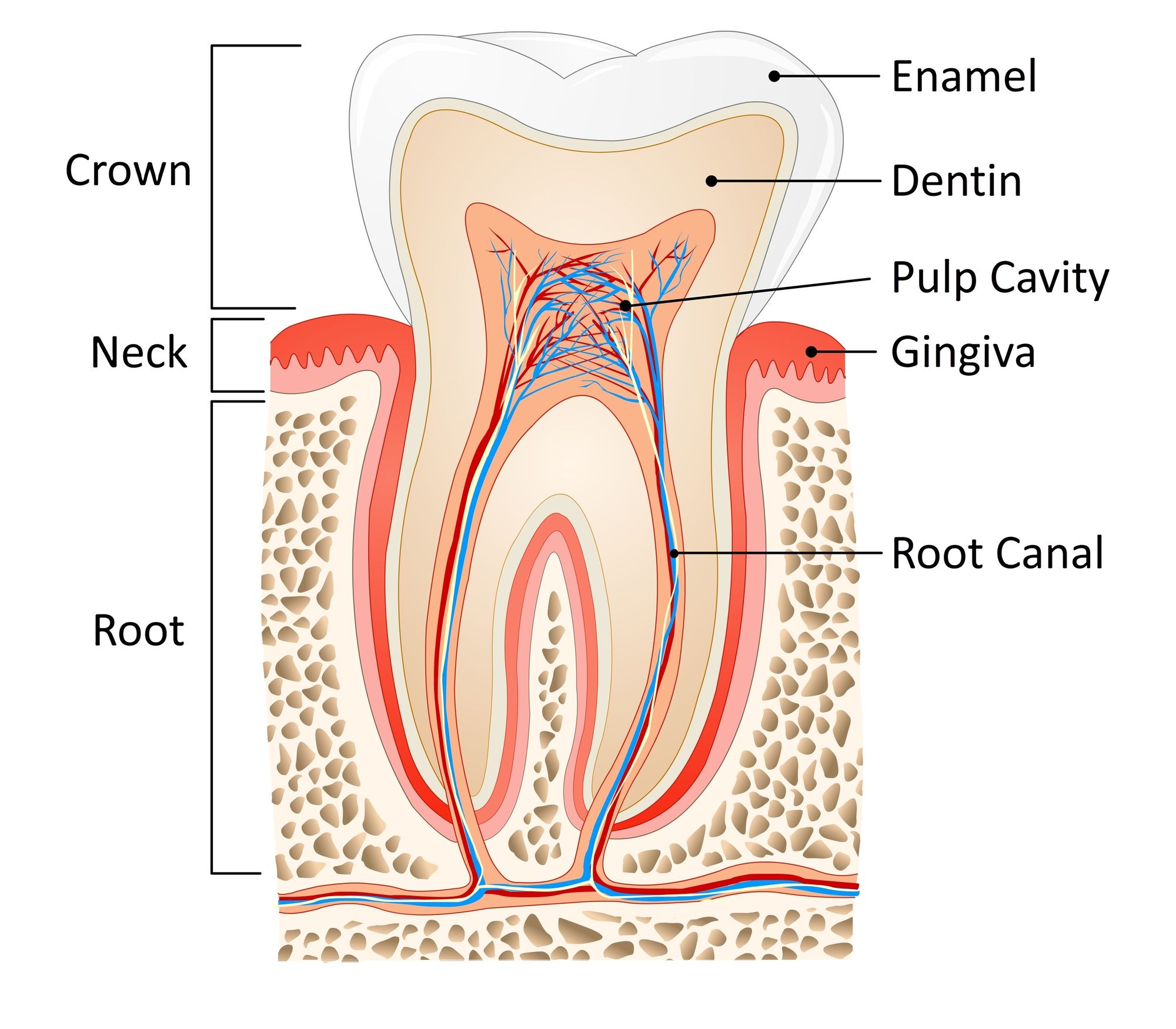My tooth is killing me? I think I might need a Root Canal or maybe I need it extracted. How can I tell? Is it going to hurt? How much does it cost?
FREDERICK, Md. - June 1, 2022 - PRLog -- A root canal procedure isn't quite as scary as it sounds. Especially with a skilled and experienced endodontist on your side.
Root canals are tiny passages inside the teeth that extend downward to the roots and contain blood vessels, nerves, and other tissue (pulp). These passages become important for dental treatment when damaged or diseased pulp is removed. Root canal therapy is one of several interior dental treatments commonly performed by an Endodontist.
What is an Endodontist?
Like many other dental terms, the word "endodontic" finds its origins in ancient Greek language. The word "endo" meaning inside, is combined with the word "odont", meaning tooth.
Endodontists specialize in treating tooth pain, infections, and other diseases related to the interior or "pulp" of the tooth. Since successful endodontic treatment can often prevent tooth extraction, the American Association of Endodontists (AAE) describes the profession as the "tooth saving" specialists of dentistry.
Emergency Dentists
Injury or disease involving the pulp can irritate the nerves and cause severe pain. For this reason, an endodontist might be called upon as an emergency dentist. Endodontists are experts at administering medications including topical numbing treatments that ease tooth pain and make patients feel more comfortable.
Endodontists use specialized surgical tools and materials such as drills, files, plugs, and dental dams along with X-ray equipment, special microscopes, and digital radiographs to view the interior of the tooth.
PearlFection Dentistry is fortunate to have an experienced, board-certified endodontist as a valued member of a Frederick, MD team. Dr. Pratik Patel is a graduate of George Washington University and SUNY at Buffalo School of Dental Medicine, where he received his D.D.S. He obtained his Certificate in Endodontics from Columbia University in New York City.
What is a Root Canal?
When root canal treatment is performed, a small hole is drilled in the outer tooth surface, giving the endodontist an access point to the inner chamber from which all injured or infected pulp material can be removed. The chamber and root canals are then thoroughly cleaned and filled with an elastic material. The drilled hole is sealed to prevent recontamination. A crown may eventually be placed to protect the natural tooth.
Root canal treatment is usually performed in stages, so two or three office visits might be required. Modern dental tools and procedures have made root canal therapy much less invasive for patients, with a high rate of success in saving the affected tooth.
When do I need a root canal?
Persistent tooth pain can be a sign that progressive tooth decay, a tooth abscess caused by bacteria inside the tooth or gums, or a crack in the tooth's surface has formed. Other symptoms that might indicate a root canal is necessary and dental treatment should be sought right away include:
- Tooth sensitivity to temperature (hot or cold)
- Loose tooth/teeth
- Swollen jaw or gums
The dentists, endodontist, and other dental specialists at PearlFection Dentistry are adept at determining the cause of tooth pain and prescribing the correct course of treatment. A complete team of oral surgeons, periodontists, general and cosmetic dentists, prosthodontists, orthodontists, and pediatric dentists are available to assist Dr. Patel and the general dentists with diagnosis and treatment when dental emergencies occur.
Root canal vs tooth extraction
A root canal is sometimes confused with tooth extraction, but they are very different procedures. Root canal therapy allows the natural tooth to be retained by removing the diseased pulp within it. Although a crown may be required to fully restore the tooth, the root, bone structure, and alignment of surrounding teeth is preserved.
In some cases, an injury, tooth abscess, or tooth infection is so severe that the tooth cannot be saved and must be extracted. Using special dental appliances, an endodontist or oral surgeon will carefully loosen and remove the tooth from its socket. Since the resulting gap cannot be left indefinitely, a restorative dental implant or bridge is usually needed.
What else can Endodontists do?
Tooth infection caused by bacteria is one of the common reasons patients will require the unique skills of an endodontist. These specialists are also adept at treating many tooth injuries caused by accidents, sports, or other mishaps. With the prompt treatment of an injured or dislodged tooth and the surrounding tissues, an emergency dentist can often stabilize the injured area and replace the tooth in the socket.
Other valuable procedures performed by endodontists include:
- Apicoectomy: A type of endodontic microsurgery used to remove infected tissue at the tip of the root that cannot be accessed through the root canal.
- Pulpotomy: Similar to root canal therapy, a pulpotomy is used to treat and remove infected tissue within the pulp of the crown, usually caused by tooth decay. Since the pulp in the root canal is left intact, the tooth is still able to grow.
- Retreatment: Occasionally, the symptoms that led to the original procedure will return, making root canal retreatment necessary. This could be due to a new tooth trauma or a new infection forming within the small passages of the root canals.
Learn more about Endodontic Treatment
All dentists undergo training in endodontic therapy, but only 3% pursue it as their specialty. The education, training, and board certification processes completed by Dr. Patel and other endodontists make this unique vocation among the most challenging, valuable, and rewarding in the dental field.
PearlFection Dentistry offers the very best options for root canal treatment and other endodontic procedures. Backed by a complete team of specialists under one roof, the diagnosis, treatment, and restorative options for children and adults are second to none.
PearlFection Dentistry continually strives to help patients to improve their knowledge as they learn more about emergency dental care, endodontic treatment, oral hygiene, and other important topics. Contact us at (301) 663-5550 to set up a consultation. We will be happy to answer any questions that you have.
Contact
R Stewart Stringer
***@pearlfectiondentistry.com
2404574610
Photos: (Click photo to enlarge)



Read Full Story - What Is an Endodontist? Do I Need A Root Canal? | More news from this source
Press release distribution by PRLog